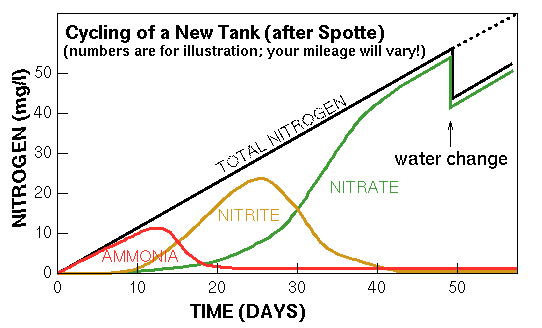Agreed. Regular filter cleaning is key... How do you measure NO3 level consistently btw.? My NO3 readings using the API test kit could be anywhere from 40 to 160ppm.... realistically its probably around 30ppm.
How so? if the bacteria colony is just reduced due to the competition with plants why would that make it a liability.
I agree. That is what I prefer as well. A massive plant to livestock ratio. I am starting to think of my filtration as mostly mechanical filtration and a source of flow and circulation and much less about the bio filtration given my plant mass, but I do not doubt for a second that some is happening and that it is beneficial.
Cheers,
Michael
While I agree that there are issues with Nitrate testing, my Sera NO3 test appears to give me consistent results in terms of the broad colours.
- Greenish-yellow (0 Nitrate tap water reference),
- Yellow
- Orange
- Red
When I increase my NO3 dosing, at the end of the week, the test shows a darker shade of colour. When I decrease my NO3 dosing, the test shows a lighter shade. Similarly, when my Nitrates are on the high side, eg: Orange, after I do a water change, the test colour shows yellow. This is what I understand as 'consistency'.
For example, recently I added root tabs and reduced water column dosing slightly - the test result colour is consistent with that - I am confident based on the way the test has performed that if too much nitrates leaked out into the water column, it would result in a darker colour shade for the NO3 test.
What is true is that I don't know how many ppm of nitrates corresponds to yellow, orange, red respectively. This may limit the test's usefulness if I was trying to achieve some sort of 'target' NO3 ppm (I'm not, I agree that all I need to know is how much I add, and how much my tap water has - and this also sort of corroborates the test colours - if my tap water is 0 Nitrates and I add 10ppm a week, there is no reason why the test should suddenly show 100ppm Nitrates for example - so far the test colour of yellow is consistent with my dosing regime).
But I still feel the test is using for checking that NO3 levels are stable - if every week your test shows yellow but one week it suddenly turns orange/red - maybe you have a decomposing fish somewhere that needs to be removed, problematic root tabs or something like that- water parameter instability being one of the possible factors in algae outbreaks.



